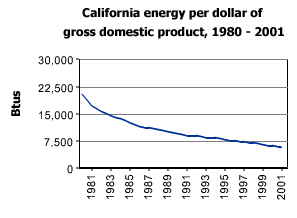 This post is the slightly tardy conclusion of a series (see parts one, two, and three).
This post is the slightly tardy conclusion of a series (see parts one, two, and three).
Let’s wrap this up by shifting gears a bit. Additionality is central and essential part of the carbon offset market. Additionality is also, in the long term, probably not relevant to the energy efficiency market. The reason hinges on the difference between carbon offsets and carbon allowances. Both are often lumped together under the term “carbon credits,” but they’re different in important ways that are sometimes lost in discussions of cap-and-trade systems.
Some basic definitions are in order. Carbon allowances are those things that everyone is eager to auction off these days: pollution permits for greenhouse gas emissions. Under a cap-and-trade system, the government issues a fixed number of these permits, and every year the number drops. That’s the cap, and as long as it covers a sufficiently large swath of the economy, it’s difficult for polluters to evade. (New Yorkers can’t, for example, buy electricity from China.)
Carbon offsets, on the other hand, are pollution permits generated from specific projects that exist outside the cap. For example, no matter how big a chunk of the economy the cap covers, it probably won’t cover cow manure on small dairy farms. If you can demonstrate that you took specific measures to reign in a certain number of tons of dairy farm methane, you can use those emissions reductions to satisfy your obligations under a cap.
Additionality isn’t an issue for allowances. The number of allowances is fixed, and that’s that. They might get traded and passed around between polluters, their price might rise or fall, but they still represent a hard limit on the amount of carbon the economy produces. Additionality is a major issue for offsets. If any old project can serve as a source of offsets, polluters can easily sneak out of a cap.
This last point seems to bother a lot people. Indeed, it’s a bit counterintuitive. Isn’t a reduction a reduction? If company X emits 100 tons of CO2 one year and then 90 tons the next, why should we care about their motives? Let’s just reward the reduction.
The problem here is that a massive number of emissions reductions and efficiency gains are happening all over the economy at any point in time, even as aggregate emissions go up. Check out the graph up top. The carbon intensity of the California economy has plummeted since 1981, dropping by roughly 4 percent per year. There are, of course, lots of reasons this has happened, but clearly carbon offsets weren’t a driving factor back in 1981. If you try to build a cap on top of this trend that drops total emissions by roughly 2 percent per year, as Lieberman-Warner does, non-additional offsets would let you easily fulfill that cap by cherry-picking all the efficiency gains that were occurring in the economy anyway. (Please note that you can’t compare the 4 percent and the 2 percent figures directly — they measure different things. The point is just that non-additional offsets will easily wash out a cap.)
Allowances to the rescue. Because allowances impose an economy-wide hard cap, no cherry-picking can take place. Additionality concerns go away. The difference between offsets and allowances is critical for energy efficiency measures like Sean’s co-generation projects. Once a cap is in place, allowances will privilege Sean’s low-carbon energy by making it comparatively cheaper than dirty energy. The coal plant down the street has to buy lots of allowances to cover its emissions, a cost which eventually gets passed on to customers. The market tilts toward projects like Sean’s that don’t carry this allowance burden. Best of all, allowances don’t come with any pesky additionality tests. Additionality, in a certain sense, is built into the cap.
Now, Sean has argued persuasively that the “stick-based” incentives provided by allowances aren’t always enough to overcome various sources of inertia in the energy market that prevent — at least in the short term — good projects from moving forward. This is clearly a big problem, and I can imagine a number of policy prescriptions (such as set-asides — freebie allowances for clean energy producers) that might help. But abolishing additionality isn’t one of them, because additionality is, in this case, a red herring. The whole purpose of high-quality, additional offsets is to encourage carbon reductions in sectors of the economy not otherwise covered by a cap. The purpose of allowances is to force carbon reductions in the sectors that are covered. Getting rid of additionality would damage both mechanisms simultaneously.
 This post is the slightly tardy conclusion of a series (see parts
This post is the slightly tardy conclusion of a series (see parts 

